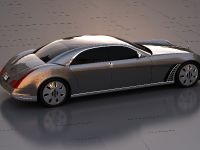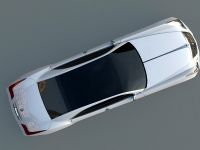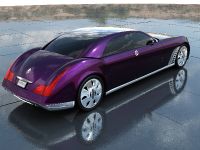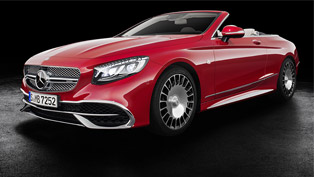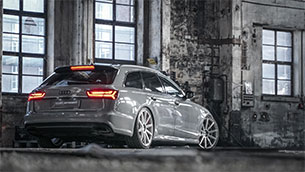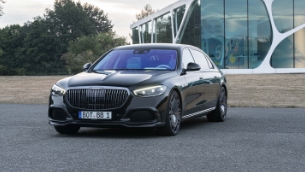Meet Natalia SLS2: Lean In The Waist, Mean Under It... And Very Very Smart
The year was 1996. The then-new AUDI A8 3.7 and Mercedes S320 were getting it on... Until they actually got a move on, that is. When they did, the Audi obliterated the Mercedes gern1, both in terms of acceleration and top speed (table below), while keeping about the same fuel consumption as its Stuttgart foe.
| 1996 Mercedes S320 vs. Audi A8 3.7 | ||
| Acceleration 0-100 km/h | 9.5s | 8.7s |
| Top Speed km/h | 230 | 250 |
| Average Fuel Consumption (l/100km) | 11.5 | 12 |
| Engine | 3.2-liter I6 | 3.7-liter V8 |
| Horsepower | 228 | 230 |
"I didn't know that Audi had been light years ahead of Mercedes in terms of building engines!" - some of you might think. They were certainly not! Rather, they were simply better physics students. Consequently, their A8 weighed a whole 5 kgs more than a 1996 Mercedes E320.
"But I though this was about the S 320!!!" - some of you are already scratching their heads, while impatiently browsing back up to make sure.
Actually, it is about weight reduction. It is THE reason why the FWD Audi could spank the RWD Merc so easily in terms of speed, acceleration, and agility. While the former tipped the scale at a very modest-for-the-class 1645 kgs, the latter left all modesty behind with its whopping 2040 kgs, about 400 kgs up on the Audi, or roughly 25% of its weight!!!
Nowadays, we are only a spoiled teenager ahead, in terms of time. Heck, some of us even have a pair of shoes from 1996! In terms of automotive industry reality, however, a whole eternity has trickled down between 1996 and now. Some things never change, though. Speed, acceleration, agility, and even stopping power are all still a function of cars' weight (as well as rigidity). Thus, as spectacular as a Veyron is with its specifications, it needs an incredible amount of technology to deal with the humongous 8-liter W16 quad-turbo engine, around which the rest of the car is conceived. The end result is a supercar 2-seater, which weighs 2 tons. Without taking anything away from Bugatti and VW AG's amazing accomplishment, how much do you think a limousine of the same "uber" fashion would weigh? 4-5 tons?
While Kim Chen Ir, for example, might not give a party-supported damn about any such details, a large part of the world does. Let us face it: these days every piece of technology needs to have "sustainability" screaming from it, in order to be successful... even garbage trucks and cars, which reach speeds in the realm of 400+km/h.
DiMora Motorcar have been working on one such super limousine named Natalia SLS2. It should be the world's first production $ 2 million car, so you know it should be at least on par with the Bugatti when it comes to beauty, exclusivity, panache, and mind-blowing specs. The Natalia SLS2 is conceived as a Maybach-Bentley-Rolls-Aw-What-Have-You killer. At over 6m in length, housing a 14-liter, V16, 1200-horsepower engine, which surprisingly was not taken off one of Roman Abramovich's mega yachts, it is monumental!
There is no doubt that, if this car makes it successfully into actual production, it will be the most impressive set of wheels 2 million dollars can buy. More importantly, it will be unique with regards to the way it treats the environment. Variable-cylinder, as well as new fuel system technology, which is still undetailed, will give it comparatively excellent levels of fuel consumption. 60 onboard computer systems 2 will guarantee an unprecedented extent of sophistication, communication, entertainment, comfort, and security. A variable-type suspension, which also remains in the dark for now, should do away with any nuisance at supercar speeds and leave you with the sole discomfort of acceleration-caused nausea.
The monumental centerpiece, which links all of the above, though, is the revolutionary chassis, which DiMora have come up with: the D-Tek chassis. It defies current tubular frame technology's principles to come up with a chassis, which is assembled from extremely light-weight, 99% recyclable body panels precisely hooked onto one another via joints. Thus, it will only weigh about 210 kilograms, while a regular chassis of this size would tip the scales at about 860 kilograms. Overall, according to DiMora, this sole advancement will bring down the weight of the Natalia SLS2 to about 700 kilograms less than a conventional similarly-sized luxury vehicle. "The Audi effect!" - you might be thinking. Yes and no: DiMora have taken the same approach, only made it 13 years more advanced. They have mostly done away with aluminum, which is expensive, difficult to shape and repair, and apparently produces more units of greenhouse gases than aluminum during its own making. Not entirely, however: D-Tek honeycomb core chassis materials are currently using some aluminum, as well as titanium, thermoplastics, and Nomex (a high-strength, fire-resistant material used in the U.S. Space program, racing, and firefighting equipment). Current face materials pool of possibilities includes lava rock materials, carbon fiber, aramids, and others. If this, for some inexplicable reason, is not exotic enough, DiMora claim that, "Many other core and facing materials can be specified to meet a client's requirements for strength, weight, insulation, features, and cost." Best of all, the D-Tek technology allows for a more financially- and time-efficient production cycle due to fact that parts could be fully designed using CAD software.3
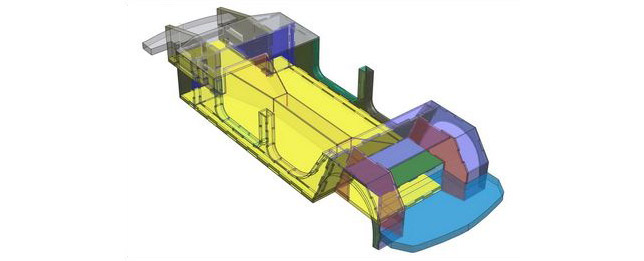
Only the future can show the limits of the seemingly huge potential of the D-Tek technology, the sustainability aspect has definitely been fulfilled. Surely, it will be nothing short of spectacular once it comes to the DiMora Natalia SLS2: both because of the technical specifications of the car, as well as the fundamental advancements it introduces to automotive production cycle.

